Be creative at the Piano (Part 4)
Browse in the Library:
| Artist or Composer / Score name | Cover | List of Contents |
|---|---|---|
| Waltz For Debby – Bill Evans (Musescore File).mscz | ||
| Waltz From The Balet ‘coppelia’ (Musescore File).mscz | ||
| Waltz In A Minor F. Chopin (Musescore File).mscz | ||
| Waltz In E Minor Op. 39 No. 4 – Johannes Brahms (Musescore File).mscz | ||
| Ward-Jackson’s Gymnastics For The Fingers And Wrist – based On Anatomical Principles (By Edwin Ward-Jackson) 1874 |
 |
|
| Watermark (Musescore File).mscz | ||
| Watermelon Man (Musescore File).mscz | ||
| Waters of Irrawaddy (Hans Zimmer) from the movie Beyond Rangoon | ||
| Wave – Vou Te Contar Jobim (Musescore File).mscz | ||
| Wayne Shorter – Ana Maria |
 |
|
| Wayne Shorter Artist Transcriptions The New Best of |
 |
Wayne Shorter Artist Transcriptions The New Best of |
| Wayward Sisters – Nocturnal Animals OST (Abel Korzeniowski) | ||
| We are the champions (Queen) | ||
| We Are The World Songbook |
 |
we are the world |
| We Shall Overcome Essays on a Great American Song (Book) by Victor B.Bobetsky |
 |
|
| We Wish You A Merry Christmas | ||
| We Wish You A Merry Christmas – Anonymous (Guitar arr. sheet music with TABs) | We Wish You A Merry Christmas – Anonymous (Guitar arr. sheet music with TABs) | |
| We Wish You A Merry Christmas – Guitar TABlature |
 |
|
| We Wish You A Merry Christmas (piano solo sheet music) |
 |
|
| We Wish You A Merry Christmas Trad. English Christmas carol |
 |
|
| We Wish You A Merry Christmas Trad. English Christmas carol.mscz | ||
| Weather Report – A Remark You Made (Guitar TABS) | Weather Report – A Remark You Made (Guitar TABS) | |
| Weather Report – The best of Weather Report (Full score) |
 |
Weather Report – The best of Weather Report (Full score) |
| Weather Report Best Of Weather Report Band Score Book |
 |
Best Of Weather Report Us Book |
| Weber – Der Freischütz (Ouvertüre) Piano Solo arr |
 |
|
| Weber – Der Freischütz (Ouvertüre) Piano Solo arr.mscz | ||
| Weber – Der Freischutz Overture piano solo arr. |
 |
|
| Weber op 65 Invitation to the Dance (Invitation to the Waltz) | ||
| Weber’s Last Thought – C.M. von Weber |
 |
|
| Wedding Collection for Piano Solo |
 |
Wedding Collection for Piano Solo |
| Wednesday Morning 3 A M – Simon & Garfunkel (Musescore File).mscz | ||
| Weight Of The World – Nier Automata Piano Collections (Musescore File).mscz | ||
| Weissenberg En Avril A Paris (April In Paris) Charles Trenet |
 |
|
| Well Tempered Praise – Mark Hayes piano |
 |
Well Tempered Praise – Mark Hayes piano |
| Well Tempered Praise II by Mark Hayes |
 |
Well Tempered Praise II by Mark Hayes |
| Well Tempered Praise III – Mark Hayes piano |
 |
Well Tempered Praise III – Mark Hayes piano |
| Well Tempered Praise Vol 4 Gospel Classics by Mark Hayes |
 |
Well Tempered Praise Vol 4 Gospel Classics by Mark Hayes |
| Well-Known Piano Solos – How To Play Them (By Charles W Wilkinson) (1915) |
 |
|
| Wes Montgomery Wine And Roses By Henry Mancini Solo Guitar |
 |
|
| Wes Montgomery – Unit 7 Solo Transcription | Wes Montgomery – Unit 7 Solo Transcription | |
| Wes Montgomery – Artist Transcriptions for guitar by fred Sokolow |
 |
Wes Montgomery – Artist Transcriptions for guitar by fred Sokolow |
| Wes Montgomery – Au Privave transcription |
 |
|
| Wes Montgomery – Days of wine and roses transcription |
 |
|
| Wes Montgomery – Take The A Train transcription |
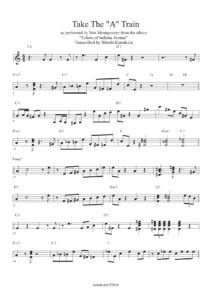 |
|
| Wes Montgomery Essential Jazz Lines (Mel Bay) |
 |
Wes Montgomery Essential Jazz Lines (Mel Bay) |
| Wes Montgomery Jazz Guitar Artistry arr. by Zafar Soood with TABs |
 |
Wes Montgomery Jazz Guitar Artistry arr. by Zafar Soood |
| Wes Montgomery Jazz No Blues Guitar |
 |
|
| Wes Montgomery The Early Years (Mel Bay) Jazz Guitar Solos Tablature |
 |
Wes Montgomery The Early Years (Mel Bay) Jazz Guitar Solos Tablature |
| Wes Montgomery The End Of A Love Affair Guitar Tabs |
 |
|
| West Side Story – Somewhere (Voice and Piano) Leonard Bernstein | West Side Story – Somewhere | |
| West Side Story (The Musical) Vocal Score Arthur Laurents, Leonard Bernstein, Stephen Sondheim |
 |
West Side Story Vocal Score – Leonard Bernstein |
| Westlife – Cant Lose What You Never Had | ||
| Westlife – Flying Without Wings | ||
| Westlife – If I Let You Go | ||
| Westlife – Mandy | ||
| Westlife – You Raise Me Up Guitar arr. with TABs | Westlife – You Raise Me Up Guitar arr. with TABs | |
| Westlife Unbreakable Greatest Hits |
 |
 |
| Wet Wet Wet – Love Is All Around | ||
| Wexford Carol (Musescore File).mscz | ||
| Wham , George Michael And Me By Andrew Ridgeley (Book) |
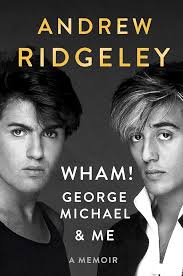 |
|
| Wham Make It Big Piano Vocal Guitar Chords |
 |
Wham Make It Big Piano Vocal Guitar Chords |
| What a Wonderful World – Thiele & Weiss |
 |
|
| What a wonderful world – Louis Armstrong.mscz | ||
| What A Wonderful World (Lead Sheet With Lyrics ) Musescore File.mscz | ||
| What a Wonderful World (lead sheet) – Thiele & Weiss | What a Wonderful World (lead sheet) – Thiele & Weiss | |
| What A Wonderful World (Musescore File).mscz | ||
| What a wonderfull World (Jazz Standard) Guitar Tablature TABs | What a wonderfull World (Jazz Standard) Guitar Tablature TABs | |
| What A Wonderlful World (Lead Sheet) (Musescore File).mscz | ||
| What You’re Made Of – Même Si (Lucie Silvas – Grégory Lemarchal | ||
| What’s That Sound An Introduction To Rock And Its History By John Covach And Andrew Flory (Book) |
 |
|
| When A Man Loves A Woman Calvin Lewis & Andrew Wright |
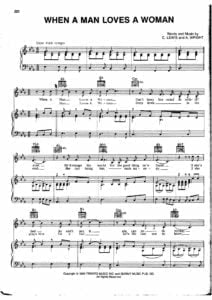 |
|
| When Almonds Blossomed – Giya Kancheli | When Almonds Blossomed – Giya Kancheli-1 | |
| When Almonds Blossomed (Musescore File).mscz | ||
| When I Fall In Love – Victor Young (Bill Evans Ver.) (Musescore File).mscz | ||
| When I fall in love Bill Evans version | When I fall in love Bill Evans version | |
| When I’m Sixty-Four (Beatles) | ||
| When Lights Are Low (Benny Carter) As Played By Miles Davis (Musescore File).mscz | ||
| When The Saints Go Marchin In – Gospel Traditional Folk song (Piano solo with Lyrics) | When The Saints Go Marchin In – Gospel Traditional Folk song (Piano solo with Lyrics) SAMPLE | |
| When The Saints Go Marching In – Fun piano arrangement | When The Saints Go Marching In – Fun piano arrangement | |
| When you told me you loved me (Jessica Simpson) | ||
| When You Wish Upon A Star (Musescore File).mscz | ||
| When You Wish Upon A Star (From The Film Pinocchio) Easy Piano Solo Arr. Sheet Music (Musescore File).mscz | ||
| When You Wish Upon A Star (Leigh Harline and Ned Washington) from Pinocchio Jazz Piano Solo arr. sheet music | When You Wish Upon A Star (Leigh Harline and Ned Washington) from Pinocchio Jazz Piano Solo arr. sheet music | |
| When You Wish Upon A Star (Solo Piano Arr ) David Dinh |
 |
|
| When You’re Gone (Avril Lavigne) | ||
| When You’re Smilling (Musescore File).mscz | ||
| Where have all the-flowers gone (guitar & voice) | Where-have-all-the-flowers-gone (guitar & voice) | |
| While your lips are still red (Nightwish) | ||
| Whistling away the dark (Darling Lili OST) Henry Mancini | ||
| White Album 2 Ending 3 Sayonara No Koto |
 |
|
| White Christmas -Irving Berlin – Piano sheet music |
 |
|
| White Christmas Irving Berlin (Musescore File).mscz | ||
| White Christmas Medley (Liberace) | ||
| White skin like the moon (Jane Eyre 2011 OST) Dario Marianelli | ||
| Whitesnake – Here I Go Again |
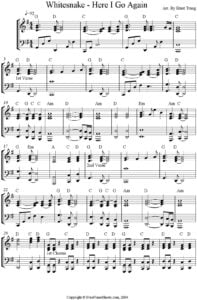 |
|
| Whitesnake Guitar Collection with TABs |
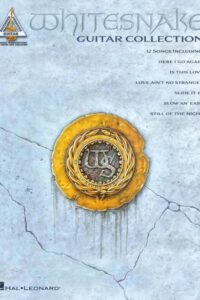 |
Whitesnake Guitar Collection with TABs |
| Whitesnake Is This Love Piano Vocal Guitar Chords | Whitesnake Is This Love Piano Vocal Guitar Chords | |
| Whitney Houston – Jesus Loves Me Sheet Music |
 |
|
| Whitney Houston The Best Of |
 |
Whitney Houston, The Best Of |
| Whitney Houston – I Will Always Love You | ||
| Whitney Houston – It’s Easy To Play Whitney Houston |
 |
Whitney Houston – It’s Easy To Play Whitney Houston |
| Whitney Houston – Saving All My Love For You | ||
| Whitney Houston – The Greatest Hits |
 |
Whitney – The Greatest Hits |
| Whitney Houston – The Greatest Love Of All | ||
| Whitney Houston I will always love you | Whitney Houston – I Will Always Love You | |
| Whitney Houston My Love Is Your Love |
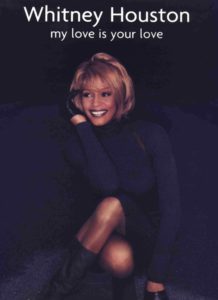 |
Whitney Houston My Love Is Your Love |
| Who wants to live forever (Queen) | ||
| Whole New World Sheet Music, A – Alan Menken |
 |
|
| Why Jazz? A Concise Guide – Kevin Whitehead (book) |
 |
|
| Wicked The Musical Sheet Music Full song Book Music and lyrics by Stephen Schwartz |
 |
Wicked the musical contents — Wicked The Musical Sheet Music Full Book |
| Wieck – Piano Studies | ||
| Wiklund Adolf Fran Mitt Fonster (From my Window) Piano Solo |
 |
|
| Wild – Fantasy On Gershwin’s Porgy And Bess | Wild Fantasy On Gershwin’s Porgy And Bess | |
| Wild Gershwin Seven Virtuoso Etudes | Wild Gershwin Seven Virtuoso Etudes | |
| Wild, Earl – Gershwin Étude No. 4 based on Embraceable You Piano | Wild, Earl – Gershwin Etude No. 4 based on Embraceable You Piano | |
| Wilde Theme (Debbie Wiseman) | ||
| Wilhelm Kempff Musik Des Barock Und Rokoko – Nr. 13 Menuett G-Moll G.F. Händel (Musescore File).mscz | ||
| Will B. Morrison – Melody in F (Syncopated Waltz) sheet music |
 |
|
| Will Young – Anything Is Possible | ||
| William Best I Love You For Sentimental Reasons (Jazz Standard) | William Best I Love You For Sentimental Reasons (Jazz Standard) |
Avoid These 3 Common Mistakes When Improvising
Mistake #1 -Thinking about what you’re going to play A lot of students think there should be some kind of preparation before improvising on the piano. They are right! There should be some thought as to the sound, tonality, and key but once these choices are made the thinking should stop
and the playing should begin.
Mistake #2 -Worrying about whether it’s good or not are you concerned with how your music sounds? Many students are. This mistake is prevalent among newbies at improvisation. They play a key or two and then think it stinks. Nothing will stop the creative fl ow more than thinking that what’s coming out of you is not good enough! Good is in the ear of the beholder. That beholder is you, so stop judging the product and focus on enjoying the process of being at the moment. This is why people learn to improvise in the first place. Let go and let the music tell you where it wants to go!
Mistake #3 -Thinking that you don’t know enough to improvise. This mistake is really an oxymoron because the more you know, the more likely it is that you will experience blocks. If you do not have a lot of formal music knowledge, don’t let that stop you. All you need to know in order to improvise is chords and the scale the chords came from. That’s it. And the
good news is this is easily learned.
Some students create unnecessary problems for themselves because they believe they need to know this or that before they can begin. This is just an excuse to avoid jumping in the water. It’s also a way to avoid the act itself because once you begin to play you may tell yourself you really don’t
know what you’re doing. Trust me. You know enough, and you know enough to begin now.

Create A Fantastic Sounding Piano Improvisation Using Just One Chord!
You’d be amazed to find out that some of the most complex sounding pieces of music are actually simple to create. Take the piano lesson, “Caverns,” for example. Here, we use just one chord in the left hand to create a harmonic foundation for the right-hand improvisation.
The right hand plays both melody and bass notes, but the left is just playing one chord. The sound that is created is full and rich! But how can this be? After all, only one chord is used. The secret is in how the chord is played. We use a simple ostinato pattern to create the backdrop.
This backdrop is the key to the whole piece. It quietly goes on in the background while the right hand is busy playing melody. Bass notes are also called into play with the right hand crossing over the left . Back and forth the right hand goes, and we end up with 2 minutes of music using just one chord!
This is an excellent example of the power of limits. We know what the chord will be – in this case, D minor. We know that we will be playing melody notes from the D Dorian mode. Now we can relax and enjoy the act of making music. With the decisions of what to play out of the way, it makes the act of creating all that easier.
Creating a Broken Chord Piano Improvisation
There are really only two ways you can play chords on the piano – solid or broken. While solid chords are nice, it’s the arpeggio or broken chord that students love to play! Cascading notes shimmer and glide up and down the piano keyboard to create a waterfall of sound!
Creating a broken chord piano improvisation need not be difficult. All that you need to know is what chords to play and how to create the broken chord sound. Knowing the chords you will play is the easy part. Creating the broken chord sound can present some with problems.
These problems can be easily overcome if we start out by using a special
chord structure known as the open position chord. Here, both hands are used to create a modern sounding seventh chord. The left hand gets the root, fifth, and seventh of the chord, while the right takes care of the third and seventh as well. With this chord structure, the beginner can create
that beautiful lush sound right away!
We can begin in the left hand and go up to play what is called an ascending piano run, or we can begin in the right and go down. We can alternate fingers back and forth to create different textures and use the notes under our fingers to explore a whole new world of broken chord possibilities.
For example, in the lesson, “Forest’s Edge,” we use open position chords in the Key of B Major to create an ascending broken chord run. Both hands are used to create it. The right plays melody notes as well. The amazing thing about this lesson is that it sounds a lot more difficult than it actually is to play.
Of course, broken chords can be played using triads, closed position chords, and any number of infinite chord varieties. But by using the open position chord first, students can quickly create a modern broken chord sound right away!
Creating a Free-Form Piano Improvisation
So many piano students wonder, how can they improvise? They just don’t understand how someone can sit down at the piano and play off the top of their head. What they don’t know is, there is some method or system behind the pianist’s approach. One of the best methods is to just pick a few chords from a key and play.
For example, imagine you’re sitting down at your piano, and you just want to play what you feel. What do you do? For starters, you could place your fingers on the first chord that calls out to you. Perhaps a minor chord is what you feel like playing. Or maybe you’re in a Major mood. The key is to not think about it and allow the fingers to move towards what it wants.
Let’s start out by playing a C Major 7 open position chord. This chord choice really determines the way the whole improvisation is approached. By using this chord structure, you’ve already determined what the sound will be. Now, all you have to do to create your free-form improvisation is to play around with this chord and a few others from the Key of C.
You can relax and play around with the possibilities and come up with your own unique improvisations. By using this template, you
begin to understand that the way pianists can sound so professional
when sitting down to play, is by using chords.
Creating a Timed Piano Improvisation!
Have you ever heard of a “writing prompt?” That’s a tool creative writing instructors use to give students focus. For example, a writing prompt could be a photo of a beautiful nature scene. The instructor will then create an exercise where students write 1000 words or so about the picture.
The beauty of exercises like this is that it gives you focus! Focus to think of nothing but writing about and describing what’s seen in the photo.
We musicians can do the same thing. We can use pictures, a descriptive phrase, or as in the lesson below, just a few chords. While the medium is different (music) the method is the same – get students to stop thinking and start creating!
The reason this works so well is you don’t have to think about what materials to use. When we have four chords to play around with, we know the names of the chords, and we know the chord type (open position.) Now all that’s required is to sit down and just play. We’re not worrying if the music is “good” or “bad.” We just play. And the more involved we get with this exercise, the more the music “loosens up.” No thinking is required here. Just the ability to play around with chords and melody.
When the allotted time is up, we can either stop or continue playing. I advise students to stop playing when they feel themselves growing disinterested or bored with their playing. The more you work with the power of limits, the freer your music will become. Why? Simply because you are not concerned with the outcome! Instead, your focus is on the process. And from this comes a music that is never forced or willed into being, but one that is inspired right from the start!
Creative Piano Playing 101
So many piano students worry about playing notes correctly. Th ey think about timing, dynamics, velocity, and so on.
Yet these same students are dying for the ability to feel something real. That spark of creative energy that enervates and refreshes the spirit.
Poets know of this feeling, as do painters and other creative people working in their respective fields. But what about music? Surely, we’re not meant to spend months and sometimes years learning how to play other people’s music. Yet, this is exactly what is being done in schools and universities around the world.
The piano is a marvelous instrument full of wonder. It sits waiting to be played. And you can play it! Not like traditional schools. You can sit down and let your fingers reach for a chord that calls to you. You gently rest your hands on this chord and music; beautiful, wondrous music comes forth! How different this is than trying to play something someone
else has written.
Your music is alive! It’s unique and fresh and born of originality! Each note perfumes the air with delicate fragrance, and you feel alive with this. Your heart and mind work together as the ideal music – YOUR MUSIC – fl oats into the air. The notes surround your heart and the hearts of others as they hear it. Gone is the need to recreate yet another dead composer’s music. In its place, a feeling of quiet joy as you let go and let the music tell you where it wants to go.
Deep Piano – How To Go Beyond Surface Playing
All of us have our “special” times at the piano. You know what I’m talking about. Those times when every note sounds like it was meant to be and everything comes together. Body, mind, and spirit are aligned and the music that flows out of us seems to come from a limitless source.
Then there are times when nothing comes. These periods are frustrating yet essential to our growth. We may not like them, but unless we go down in the valley, so to speak, we will never see the next peak on the horizon.
I’ve found that it’s best not to try and bypass this back and forth scenario. Some students get so frustrated that they try and force the music. This is a mistake and will only lead to further frustration.
The key to getting “back in flow” is to listen. Listening is essential for without it, we will only be playing on the surface. But if we tune in to what’s going on inside us – or more accurately, if we just let go and let the music itself speak through us, we’re following our intuition and going with the fl ow rather than against it.
As you might have surmised, this is similar to meditation. Not the mantra chanting kind of meditation, but the kind where you just sit and allow thoughts to come and go… watching them go by as an impartial observer.
Soon, thoughts slow down, and we are left contemplating nothing. From this place can come your deepest piano playing. To get to this place, it’s a good idea to not have a goal when sitting down at the piano. You simply allow yourself to be and explore using the materials of music – chords, notes, etc.
Perhaps the key of G Major calls to you. Then, that is what you must play. Your intuition will never fail you and will reward you with some of the “best” music possible. You must release your grasp on what you want and allow for the unexpected to develop.
Easy Piano Improvisation: Learn to Express Yourself!
Have you ever wanted to just sit down at the piano and play what you feel? Without worrying if it’s good enough or if you have enough “talent?” You can when you learn how to play piano using the amazing open position
piano chord!
This chord structure allows the complete beginner to create modern sounds at the piano FASTER THAN ANY OTHER METHOD! After teaching piano for 14 years, I can safely say that I’ve never seen students progress as fast as they do when working with this chord position. Let’s examine how one can improvise right away using the open position chord.
First, you must learn how to use it. The easiest way to do this is to simply learn the chords in the key of C Major. We take the entire 6-note chord and move it up step by step. First, we play C Major 7, then D minor 7, E minor 7, F Major 7, G 7, and A minor 7 and finally, B half-diminished. We play the chords first as solid chords (all tones together) then we break
them up.
Once we’ve got this very large chord structure down in our hands, we can then use it to create music. Improvisation simply means spontaneous expression – learning how to create at the moment. Improvising does not have to be hard!
Once you get the chords down, you’re left with the melody creation aspect, and this is easy to because all you use are the notes from the C Major scale.
We use our chords much the same way a painter uses a palette of colors. We create using chords and the element of time.
Sheet Music Download
Easy Piano Improvisation Strategy Lets You Play With Freedom and Confidence
When I first started playing piano, I looked everywhere for information to help me play what I felt. And, much to my disappointment, I was left floundering in the library aisles.
One of the things I’m good at is just knowing if something works or not. In fact, I can look at a book and, within a few minutes, determine if it has anything useful in it. It just so happens that during my library visit, I ran across a small book, barely 60 pages or so. This book contained nothing but chord progressions laid out over small 4 and 8-bar phrases. The goal of the book was to get you to play these chord changes and develop a sense of structure.
Well, it was brilliant. They say good things come in small packages, and this was pure gold to me. I took the book home and started to play through the chord changes. After all, here was something that was pretty easy to do. And it didn’t require a lot of experience. Just knowledge of a few chords.
So what’s the easy piano improvisation strategy here? Simple. You have to find the right kind of limits that will set your playing free. You see, the problem for most students is not that they can’t improvise. It’s that there are way too many choices to begin with. By playing a few chords within a set framework, I learned that I didn’t need a lot of material to begin creating my own music.
Free To Be Creative at the Piano
I sometimes wonder why people even bother taking piano lessons. I suppose the hope is that one day, with a lot of practice, they too will be able to play Beethoven, Mozart, etc.
The idea of creating one’s own music seems to be a foreign notion to most piano students. They believe it is beyond their ability. And with this belief they limit themselves. In fact, I think music may be the only area where students are not encouraged to be creative. Not only that, but the majority of piano teachers want you to learn how to note read before you learn how to play chords – that is, if they teach you chords at all.
You see, classical piano teachers can stretch their curriculum out forever. You could literally spend 10 years learning how to play other people’s music. And while there’s no denying this music is “good,” it’s also been played and recorded by people who have dedicated their entire life to getting it right.
Contrast this with visual artists. Do you think someone studying watercolor will spend years learning how to create another artist’s picture? It’s ridiculous right? Yet this is what is done in the music world over and over again.
A student interested in learning how to paint in watercolor does not want to spend time learning how to paint the “masters.” They want to be able to create their own beautiful paintings. So why should music be any different? It certainly isn’t any more difficult than learning how to paint.
Personally, I have nothing against people who just want to play from fake books or learn the classics to perform for family and friends. I just wonder why the desire to create one’s own music is so distant for most. It doesn’t have to be this way. Finding the right teacher or books is a start.
How To Quickly And Easily Improvise Your Own Unique Piano Music!
Improvisation… the word alone conjures images of free expression. It also intimidates those who have thought about actually trying it, but stopped because of self-doubt. It doesn’t have to be this way.
The ability to improvise music at the piano is a skill that, like most others, can be taught. Try having just a basic piano improvisation using just two
chords. The left hand plays a repeating pattern, while the right improvises melody. It doesn’t have to be any more complicated than this.
The problem most newbies make is they want to play sophisticated chords and elaborate melodies before they can play simply. They want to run before they can walk. And they soon talk themselves out of playing piano because it’s just too hard or difficult.
The solution here is to just relax and play slowly. Then, you can play an ostinato pattern and improvise your own unique melodies in the right hand. This is a perfect exercise for those new to improvisation because your task is so well-defined.
You see, when you have too many choices, you can get lost rather quickly. But if I were to give you an improvisation exercise that tells you to play these chords and this scale for a certain time frame, it frees you up! How? Because you now are no longer thinking of what to play. You know what to play. Now, your only concern is with self-expression. And once students get a taste of this, they always want more!
It’s very freeing, this ability to spontaneously create music. And the more one plays, the more one grows in this art. Not by constantly learning new techniques (although there’s nothing wrong with this) but by turning within and listening.
How to Be at the moment When Playing Piano
Your best music will always come when you are at the moment and just playing the piano. Why is this? Because you have forgotten about trying to make music. Instead, you are now “making” music. A subtle but crucial difference that can be detected by most careful listeners.
The key to being at the moment when playing piano comes when the technical aspects are mastered and the player can just play. Think of sports as an example. Michael Jordan didn’t have to think about how to drive the basketball to the hoop. He had done it thousands of times. Now he could allow his intuition to guide him in making the best shot.
If Andre Agassi had to think about how to hit the tennis ball, he never would be able to get it to where he wanted it. The good thing about New Age piano playing is that technique is easily learned. Once the technical aspects of playing the chords is down, you are free to allow your feeling to guide you in making music. Now you are “at the moment” and can let the music tell you where it wants to go -not the other way around.
Wynton Marsalis LIVE Wynton Marsalis Sextet plays the Music of Sidney Bechet at Jazz in Marciac 2009
Wynton and his Sextet (with Bob Wilber and Olivier Franc) performed the Music of Sidney Bechet.
Set list: 0:01 – Sheik of Araby 7:25 – Bechet’s fantasy 15:08 – Cake walking babies 18:58 – Summertime 23:23 – Promenade aux Champs-Élysées 32:20 – Petit fleur 38:00 – Way I ride 48:42 – Sweet Louisiana
Personnel Wycliffe Gordon – trombone Dan Nimmer – piano Carlos Henriquez – bass Ali Jackson – drums, tambourine Bob Wilber – soprano sax Olivier Franc – soprano sax Victor Goines – tenor sax, soprano sax, clarinet, bass clarinet
Subscribe & download the best scores and sheet music transcriptions from our Library. The Sheet Music Library (PDF) is a non-profit project dedicated to the divulgation and education of music.
Please, visit: https://sheetmusiclibrary.website/ and, if you like it, subscribe. Thanks for your support!
